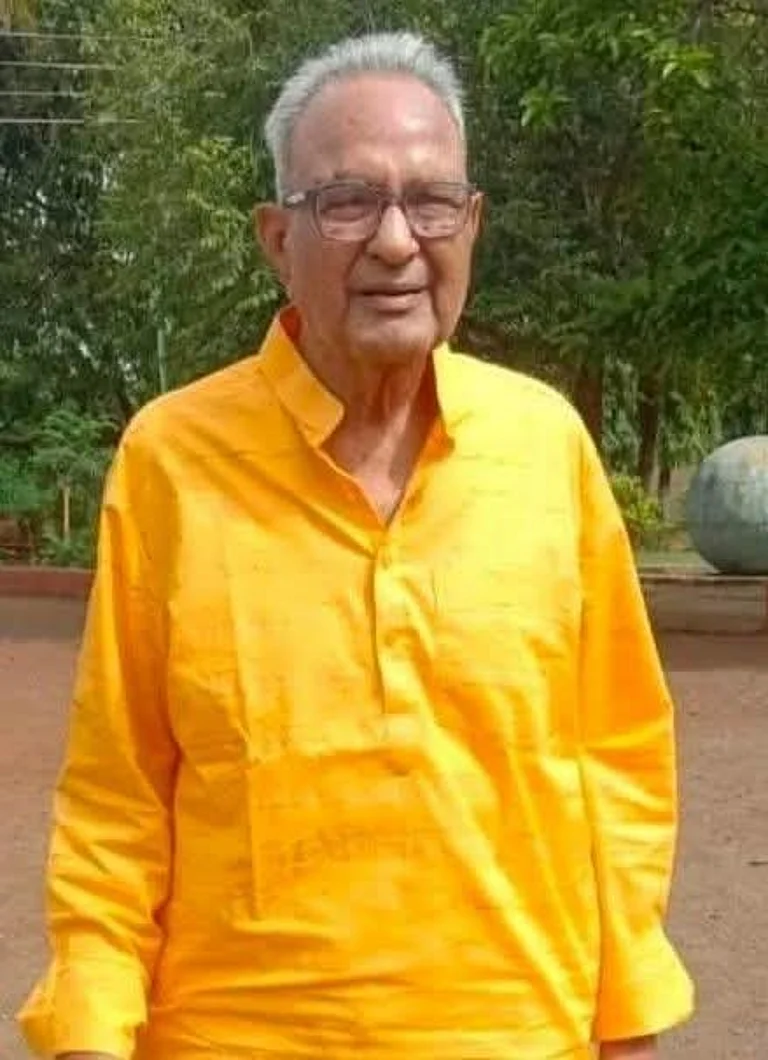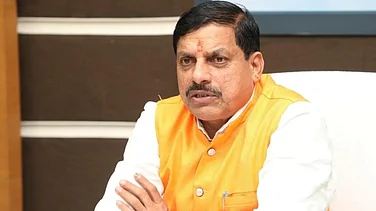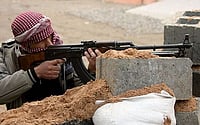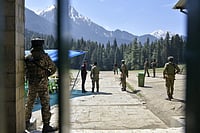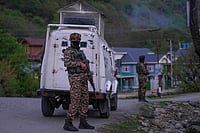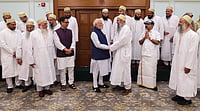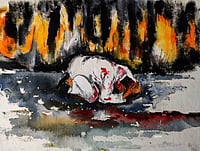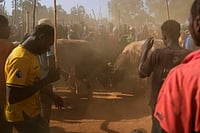“Our people are held bonded under the criminal tribes law.
We are jailed in a wired fence. Even a year-old infant is a victim of this blind tyranny. Chachaji, you got independence for this country from the Britishers. You gave swarajya (self-rule) to the people of India, but we are still jailed in a wired fence, living as slaves. Abolish the black act and give us freedom.”
Prime Minister Jawaharlal Nehru was taken aback at these words of Bhimrao Jadhav, a young activist from the criminal tribes, as he made an earnest appeal to repeal the British-era Criminal Act.
Jadhav’s evocative words prompted Nehru, who was visiting Bombay in 1949, to order BG Kher, the first chief minister of the Bombay State, to abolish the Criminal Tribes Act (CTA) of 1871, as other states had done, and allow them to live as free citizens of an independent India. On August 13, 1949, Bombay repealed the criminal act.
While India gained independence on August 15, 1947, the nomadic and semi-nomadic tribes were freed five years later, on August 31, 1952, with the repeal of the oppressive British law of the Criminal Tribes Act. A total of 192 ethnic communities were deemed as “hereditary” criminals and subjected to collective punishment, including mandatory registration in the police station, surveillance, forced resettlement, and bonded employment. Nationwide, the day is celebrated as Vimukta Jati Divas and Independence Day by the nomadic and semi-nomadic tribes, who were officially denotified from the criminal act.
The striking act when Jadhav met Nehru was the final moment in his decade-long struggle of the non-violent movement to liberate millions in Maharashtra from a literal and figurative prison known as the settlement colony—an incarceration camp surrounded by barbed wire fence.
Jadhav’s name appears nowhere in the history books. It remains elusive from Maharashtra’s glorious chapter of freedom fighters, too, who started the independence movement against the Britishers. The story of resistance of formerly criminal tribes remains suppressed and outside the purview of the mainstream history of India’s independence.
His struggle for survival through treacherous times in the settlement colony in Solapur is penned down in his memoir ‘katha kateri kumpanachi (the story of the barbed wire compound’). It traces the little-known history of the independence movement of the former criminal tribes or denotified tribes who were practically outside the pale of society.
Born in 1923 in the Bhamta-Takari caste—whose members traditionally engaged in dacoity—Jadhav was designated a criminal under the British era’s oppressive regime. The law criminalised entire communities of nomadic and semi-nomadic people as hereditary by virtue of their birth and identity. To control these tribes and prevent dacoity and crimes, the British suppressed them in large open-air prisons, surrounded by wired fences, called settlements.
“My grandfather and other youngsters from the criminal tribes living in the Solapur settlement first fought against the Britishers and then against our own leaders in Maharashtra to gain freedom,” says Bharat Jadhav, the son of Bhimrao. Like his father, Bharat was also born in the settlement colony, but at a time when the barbed wire fencing was cut off and the erstwhile criminal tribes were freed from bondage.
Today, the settlement colony is known as Salgar Vasti, in the heart of Solapur city. The local police station, a church and a few row houses built during the British era are a standing reminder of the lost history of the settlement’s incarceration camp.
“There are multiple histories of resistance across the country and regions where these settlement camps were set up, which we still don’t know off,” says Nikita Sonavane, lawyer and researcher working on denotified tribes and criminalisation. The ‘negative’ narratives on these tribes have suppressed the history of their struggle to free themselves from the black law and treat them as humans. “These tribes were itinerant of mostly nomadic and semi-nomadic communities who were constantly on the move. Some of them engaged in petty crimes and looting. The British forces found it difficult to track them. That’s how the idea came to ‘’settle’’ them in one place so that it would be easier for the police to control, monitor and surveil them.”
Sonawane notes that the criminalisation of these tribes has been ongoing since the 19th century when the British branded them as criminals. Even when the law is repealed and we don’t use the word criminals today, these tribes are treated as such by the police. They continue to follow the same methods of monitoring and surveillance towards these tribes as used during the settlement period even today. Whenever a crime happens, it is the members of denotified tribes who are picked up as the first suspects, even if they don’t have criminal records,” she says.
The Settlement Act was first enacted in the Aundh province of the North-West Frontier (present-day Punjab) and later expanded in other parts of Uttar Pradesh, Bengal, Madras and Bombay Presidency. Between 1909 and 1911, an estimated 52 settlements came up in the Bombay Presidency alone, the highest in the entire country. Among these, the Solapur Settlement was the biggest. Located at the border of the Bombay Presidency and Deccan region in Hyderabad, geographically Solapur had the largest concentration of nomadic and semi-nomadic tribes.
The Solapur Settlement housed nine tribes namely Kaikadi, Bhamta, Bestar, Pamlor, Mang-Garudi, Phase-Pardhi, Rajput Bhamta, Kanjar Bhat, and Chapparband, whose alleged traditional occupations involved robbery, looting and petty crimes.
Recalling the history of the settlement colony, social activist Yashwant Fadtare whose grandfather also lived in the fenced prison, said the tribes were valiant fighters and took part in armed revolts against the British and were hurting the economy. “Tribes like Chapparband were experts in making fake coins and distributing them among Indian citizens. Others would raid the British treasury and use the money for the freedom struggle. These tribes had become a big headache for the British forces who decided to round them up and keep them under strict surveillance.”
In all, 800 families consisting of 3,500 people were divided into six residential colonies, which were segregated in a three-tier fence system. Dreaded and serious criminals, dacoits, and bandits were housed in the centre while repeat offenders of petty crimes and those with lesser threats were housed in the outer peripheries. Entry and exit were strictly supervised and all adults above 21 years were made to mark attendance four times at the police station during the day and night. A British officer in charge of criminal tribes governed these camps.
The living conditions in the camps were squalid and several members of the families were packed in tiny rooms, Jadhav and Fadtare said about their experiences of living in the old houses. A school and hospital were operational in the camp and were later run by the American missionaries for social and educational activities. Education was mandatory for all children and there were night schools for adults. And all adults were made to work in the mills or trained in vocational skills.
The British wanted to reform criminal communities, reform them of their criminal habits and rehabilitate them through education and life skills so they can find another source of income. The intention behind this benign idea was novel; to move the tribes away from crime towards a living of honesty and integrity. But in doing so they stifled them further reinforcing the criminal tag to their identity. By segregating them from mainstream society, they took away their freedom, making them prisoners of their identity.
“The idea was to make them honest subjects, which also benefited the British with free labour. The British extracted labour from each of their subjects. They used the reforms against the criminal tribes by making them bondage labourers,” says Bhukya Bhangya, a historian and author at the University of Hyderabad.
The so-called criminal tribes were historically and traditionally not occupational criminals. Nomadic tribes were wanders by nature and lived a colourful life, earning their living through their skills in hunting, folk art, dance, music, weapons and instruments. A series of famine in the 19th century forced them to turn towards thuggery and dacoity and earn money and food by looting caravans of kings, traders, and civilians. The British considered thuggery a skilled activity practised by a group of people belonging to one particular caste. “They thought the thugs and the dacoits were criminals by nature and crime was their caste’s occupation. In one large stroke, they painted the entire communities as criminals. They wanted to reform them through sedentary means and teaching them new skills was a way to achieve that as well as offering the British free labour. It was an open-air prison. They were free to move but only within the compound under strict surveillance.”
Education and skills empowered the settlement’s young blood to become active in the independence struggle. Even while they were jailed inside the open-air prison, residents involved themselves in the freedom struggle. In 1939, when Gandhi gave the call to ‘do or die’, residents in the Settlement showed resistance by shouting Mahatma Gandhi ki Jai, during their daily roll calls. They sheltered freedom fighters on the run and attempted bomb blasts to teach the British a lesson, Bhimrao records in his book.
Inspired by the country’s independence struggle, he and other youngsters mobilised politically and kickstarted a movement to liberate the criminal tribes. They formed committees and began holding awareness meetings and conventions raising a call to cancel the criminal act and free the tribes from the fenced compound.
As a free citizen, Jadhav became an active Congress worker. In 1960, he brought Nehru to Solapur to meet the people of denotified caste in the erstwhile Settlement colony. He campaigned for the rehabilitation of denotified tribes through farmlands donated by the British to several reformed families of settlement. Taking note of his work in the nomadic Dalit movement in 1973, he became the first mayor of Solapur from the denotified tribe. He became a close ally of Sharad Pawar and switched to NCP after the party was founded in 1999.









